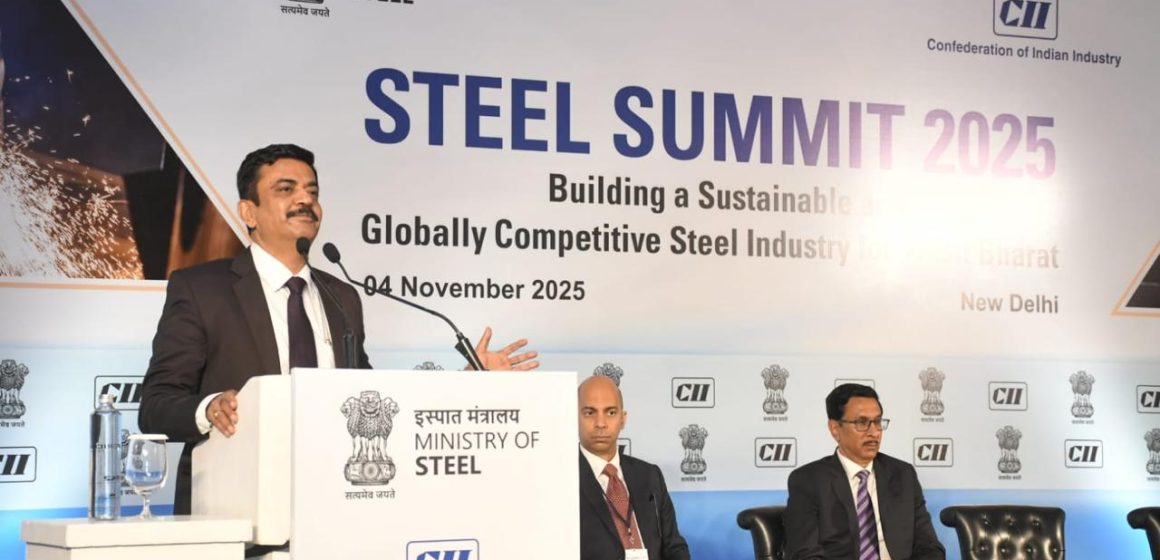Steel Secretary Sandeep Poundrik has said that the decline in green hydrogen prices may offer a breakthrough for steelmakers grappling with challenges such as import curbs within the next decade.
A growing domestic demand, falling green hydrogen prices, emerging opportunities in speciality steel, and a renewed push for indigenisation are among the key levers that can help India’s steel industry navigate current challenges, according to Sandeep Poundrik, Secretary, Ministry of Steel.
“We are perhaps the only economy where consumption has been increasing in double digits for the last three years, at over 12 per cent. This year, the consumption is likely to increase further in the second half of the financial year,” Poundrik said during his address at the Steel Summit organised by the industry association Confederation of Indian Industry (CII) on Tuesday.
He acknowledged the growing squeeze on exports due to trade barriers imposed by other countries. Measures such as the EU’s Carbon Border Adjustment Mechanism (CBAM), he said, are likely to hit hard. To remain competitive, Indian producers will need to reduce their carbon footprint.
“If we want to export to the EU, despite CBAM, then we will have to reduce the carbon footprint and move to the DRI route. The problem with the DRI route is that we don’t have gas and technologies.”
Under DRI, hydrogen replaces natural gas as the reducing agent. However, India currently lacks both the natural gas infrastructure and the enabling process technologies to scale this transition.
Poundrik noted that the decline in green hydrogen prices may offer a breakthrough for steelmakers within the next decade. Referring to discussions with the Ministry of New and Renewable Energy, he said hydrogen prices are falling faster than anticipated.
“Now, if prices continue to fall as they are, or even faster than expected, then in five to ten years, hydrogen could become a viable alternative to natural gas. At that point, the DRI-plus-hydrogen route may emerge as a practical option for producing green steel.”
He informed that the Ministry of Steel has initiated pilot projects, in collaboration with other steel companies, to test the use of oxygen and hydrogen in both blast furnace and DRI processes.
Speciality Steel Potential
Poundrik identified speciality steel as another growth area, where high-grade or advanced variants are not produced in sufficient quantities domestically. More investment and focus are needed to meet rising demand from sectors such as defence, space exploration, and power.
“And investments in this sector are a great opportunity, both from the point of view of returns and from the point of view of self-reliance.”
He pointed to the rapid expansion of the power sector as a driver of demand for transformers. Yet most of the electrical steel, particularly cold-rolled grain-oriented (CRGO) steel, continues to be imported.
“While some of our companies are investing in CRGO, this is an example of the opportunity that exists in speciality steel. So yes, there are positives, there are challenges, and there are clear opportunities.”
Poundrik stressed the importance of indigenising both technology and capital goods, especially given India’s century-long history in modern steelmaking and continued reliance on imports.
“I would request our steel makers in the private sector to explore how we can encourage indigenisation, both in capital goods manufacturing and in technologies. As far as government companies are concerned, we have already issued instructions to promote Indian technologies and plants with a higher share of Indian-made capital goods.”
Poundrik also reiterated the government’s commitment to green steel under the proposed National Mission on Sustainable Steel, aimed at reducing the carbon footprint during the manufacturing process.
– Manish Pant


